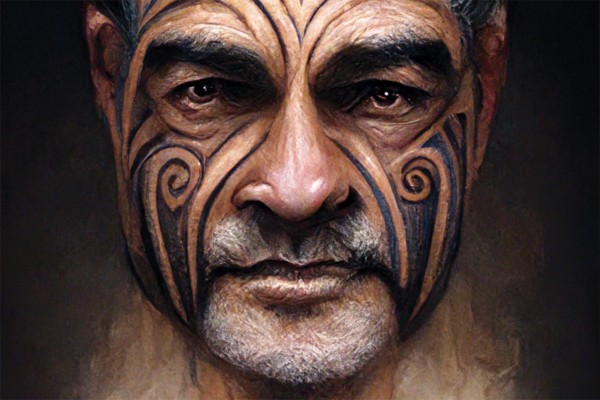We were supposed to have flying cars by 2022, but instead, we have bots that don’t know how to differentiate indigenous cultures from opposite sides of the globe. The day that artificial intelligence recognises tā moko on iPhones, automatically generates captions in te reo Māori, and responds when I say “Hiri! He aha te taima?”, maybe then, I’ll praise the capabilities of AI bots. Until then, though, if you’re gonna appropriate culture, you could at least get it right.
From topknots to taonga and tā moko, our Polynesian ancestors were well-decorated since their Hawaiki days and knew exactly how to develop their cultural style. Their significantly geometric patterns and designs gradually evolved to become the artistically intricate culture we maintain today. However, with the commercialisation and spread of Māori culture overseas, several non-Māori artists have faced severe (and sometimes threatening) backlash for their use of distinctive Māori designs in their work. But what would the future of toi Māori look like if artificial intelligence hopped on the trend of appropriating Māori art?
To set the scene, even traditional Māori society was all for gatekeeping toi Māori. Tohunga (experts, specialists) and women with significant mana were often not tattooed due to their status within society. Tā moko was, more often than not, reserved for those who were significantly distanced from the atua (deities). On the other hand, pre-colonial tohunga tā moko held a prestigious, irreplaceable position in society. They were relied on for their ability to bring whānau closer to their ancestors and were often commissioned for their work.
For non-Māori, however, the incredibly tapu nature and ‘exotic’ look certainly add to its demand, sparking controversy across the motu (country). The rebirth of tā moko in the 1970s was a way for Māori to reclaim their position as tākata whenua, the natural custodians of Aotearoa; while tauiwi (foreigners) are free to make use of the saying “ignorance is bliss” and accessorise with cultural motifs dating back millennia.
There’s no surprise that many Māori would be on the prowl to protect such an age-old tradition from ‘outsiders’ - but why? It all comes down to protecting our whakapapa, our genealogy.
Traditional motifs paint stories of genealogy and vast journeys across the treacherous Pacific. We’ve already heard that non-Māori artists have no connection (nor right, really) to these designs and their history, so does this criticism also extend to artificial intelligence which also has no connection to Māori culture? Naturally, I would agree. Artificial intelligence generators barely recognise Māori patterns when prompted, spitting out lacklustre, inaccurate representations that just don’t do justice to a culture that traversed the Pacific Ocean and survived nearly 200 years of colonial injustices.
Considering these cultural illustrations represent the ancestors and identities of an entire culture, you really shouldn’t be getting them wrong. That being said, the AI makes these images by googling the prompt and then finding all the related images and stitching them together. What's probably happening is that it's seeing a brown person (already a problem for AI engines) and then just assuming that all other brown people are the same, and bringing in styles from completely different populations under the umbrella of “brown people’s art”. As far as the actual designs are concerned, the AI can't quite pin down how to spell out the exact shapes and patterns that give tā moko meaning. It can't do this for English, either, but it damn sure can do a lot better with the highly-visible English language than it can for te reo or tā moko designs. This failure is a reflection of the internet's whitewashed nature and the consistent invisibility of Māori and other minorities in online culture.
Test prompts we tried out at Critic Te Ārohi provided a good insight into the capabilities of the various AIs. When prompted to recreate tā moko designs, one AI flat-out refused to draw face tattoos of any kind, seemingly lumping in traditional tā moko with gang ideology - not good. Another AI generator gave a moderate representation of several geometric, symmetrical lines, with little detail or motifs that distinguish a clear connection to Māori designs. Rather, one apparent ‘tā moko’ incorporated bits of an Incan sun illustration. Yikes. Minor inaccuracies aside, it says a lot about the actual capabilities of artificial intelligence, and what we can expect in the future. If we’re already honking at non-Māori artists' capitalising on Māori motifs in their work, what happens when AI bots also hop on the cultural exploitation waka?



